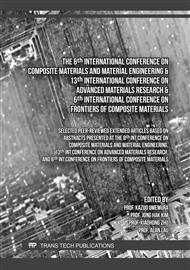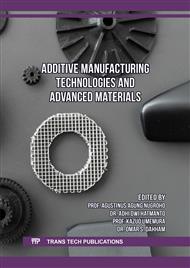p.109
p.123
p.131
p.139
p.147
p.153
p.171
p.181
p.193
Failure Analysis of AISI H13 Shafts Used in Twin Screw Extruders during Fluoropolymer Compounding
Abstract:
AISI H13 material finds wide use as screw shafts and screw elements in Twin Screw Extruders for Polymer Compounding applications owing to its high strength, excellent thermal shock resistance, high wear resistance and good fatigue strength. However, two AISI H13 shafts used in the Twin Screw Extruder supplied for fluoropolymer application experienced breakage after two years of service. Visual examination of broken shafts revealed deposits of processing material, rust marks and grooves at multiple locations on the shaft spline at the element to element butting zone. The location of breakage of the shaft was noted at Barrel No.5, which happens to be the vent zone of the extruder. The fracture surface was observed to be almost perpendicular to the rotating axis of the shaft. Macro-examination of the shafts showed abnormal wear at the groove areas and significant reduction in the diameter of the screw shafts with complete absence of spline in the zone adjacent to fracture. Hardness survey revealed values of 25-27 HRC that was 18-20 HRC lower than the hardness in supply condition. Microstructural examination on the failed shafts showed fine spheroidized carbides with ferrite in tempered martensitic matrix. SEM Analysis on samples from fracture surface revealed presence of multiple micro-voids and indicated coalescence of these voids. Based on the investigation & analyses it was inferred that the predominant mode of failure of the shafts had been “Corrosion Assisted Ductile Rupture” in elevated temperature operating conditions. Finally, recommendation to prevent occurrence of such failures has been proposed.
Info:
Periodical:
Pages:
193-199
Citation:
Online since:
July 2023
Authors:
Price:
Сopyright:
© 2023 Trans Tech Publications Ltd. All Rights Reserved
Share:
Citation:



